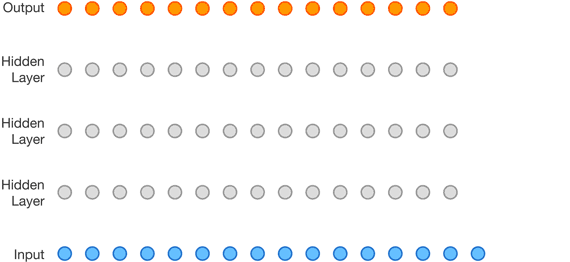This is imported project of a 6th place solution for kaggle competition "Web Traffic Forecasting"(https://github.com/sjvasquez/web-traffic-forecasting) by Sean Vasquez, a student MIT. Based on WaveNet from Google DeepMind, the CNN solution first encodes the features of the training data include the web hits every day and other information including country , agent, access, projects, using covolution with dilations. Then it predicts the future hits using temporal covolution with dilations based on the input(x), convolution results(conv_inputs), and stacked features (decoded features for prediction).
The original solution works for tensorflow 1.3.0 and python 2.7, I makes some changes to work for python 3.4.
- Download the data from kaggle for this competition, unpack train_2.csv.zip into directory data/raw/ and change file to train_final.csv
- Generated the training data by running: python prepare_data.py
- Start training and predict: python cnn.py
My solution for the Web Traffic Forecasting competition hosted on Kaggle.
The training dataset consists of approximately 145k time series. Each of these time series represents a number of daily views of a different Wikipedia article, starting from July 1st, 2015 up until September 10th, 2017. The goal is to forecast the daily views between September 13th, 2017 and November 13th, 2017 for each article in the dataset. The name of the article as well as the type of traffic (all, mobile, desktop, spider) is given for each article.
The evaluation metric is symmetric mean absolute percentage error (SMAPE).
A single neural network was used to model all 145k time series. The model architecture is similar to WaveNet, consisting of a stack of dilated causal convolutions, as demonstrated in the diagram below.
A few modifications were made to adapt the model to generate coherent predictions for the entire forecast horizon (64 days). WaveNet was trained using next step prediction, so errors can accumulate as the model generates long sequences in the absence of conditioning information. To remedy this, we trained the model to minimize the loss when unraveled for 64 steps. We adopt a sequence to sequence approach where the encoder and decoder do not share parameters. This allows the decoder to handle the accumulating noise when generating long sequences.
Below are some sample forecasts to demonstrate some of the patterns that the network can capture. The forecasted values are in yellow, and the ground truth values (not used in training or validation) are shown in grey. The y-axis is log transformed.
12 GB GPU (recommended), Python 2.7
Python packages:
- numpy==1.13.1
- pandas==0.19.2
- scikit-learn==0.18.1
- tensorflow==1.3.0






